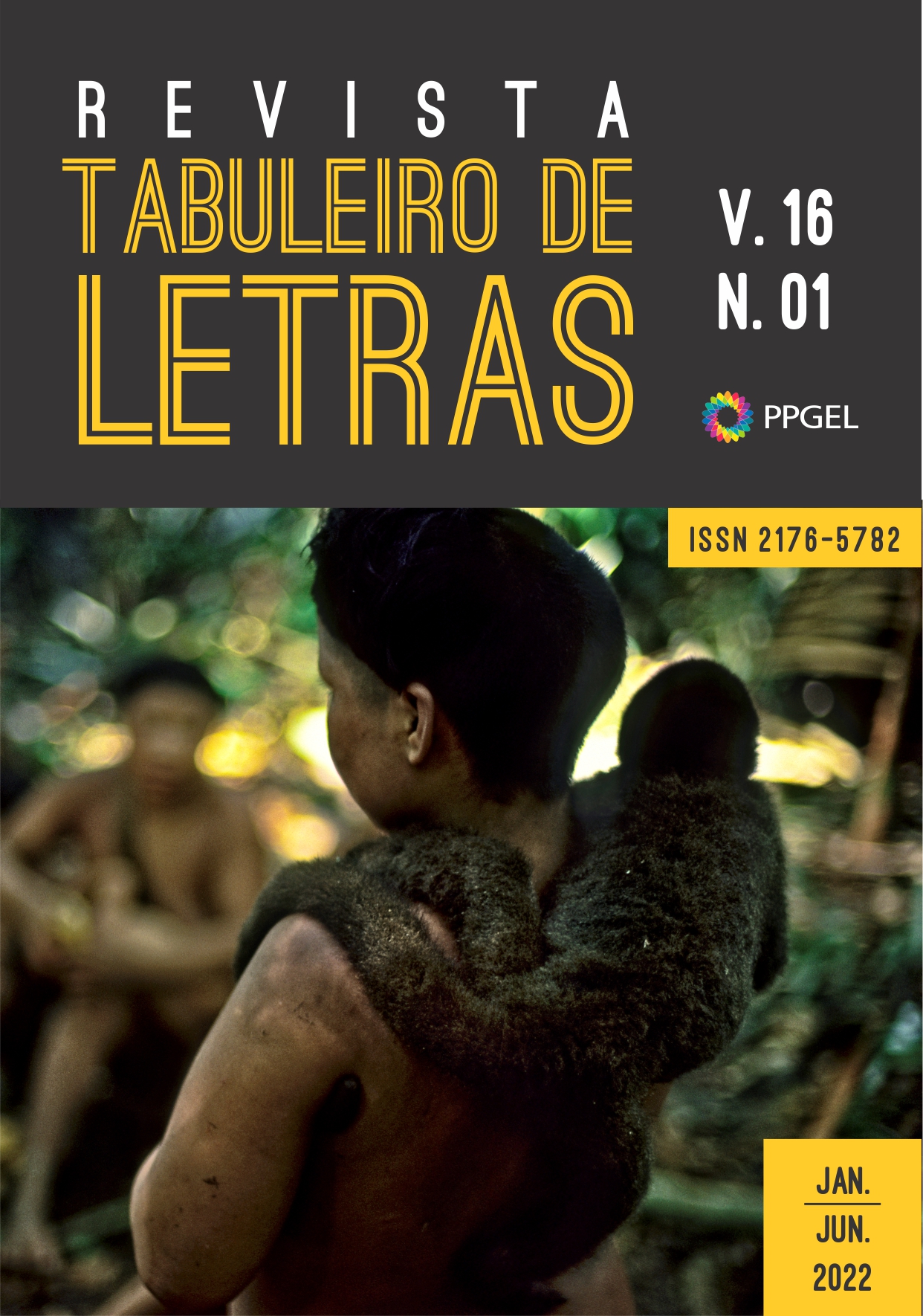Cordilheira de amora II: detritos de infância Guarani-Kaiowá
DOI:
https://doi.org/10.35499/tl.v16i1.14041Abstract
Cordilheira de amora II [Mulberry Range II] is a documentary/short film produced by filmmaker Jamille Fortunato, in the year 2015. Recorded in Aldeia Amambai [Amambai village], in Mato Grosso do Sul, the short follows the nine-year-old Guarani Kaiowá girl Cariane Martins. Amidst the ruins of bricks, dry clay, old wood, and abandoned appliances, Cariane creates her imaginary reality. From disposable objects — the detritus of adult existence — she turns her backyard into an experiment on the world. Taking as a starting point the narrative and the voice of the child, our interest in this article is to focus on children's knowledge simultaneously associated with indigenous knowledge, both of which are considered "minor" in the face of a modern world-system that privileges European knowledge - and, of course, adult knowledge -, raising it to the false level of universal knowledge, supposedly able to encompass the entire history and subjectivity of peoples. The fantasy appears here no longer as the antithesis of objectivity, rationality, accuracy; rather, it appears as a potential vector of what we call a "child-indigenous poetics", combative, in its own singularity, in the response against the chains of a "colonization of imagination".
Keywords: Mulberry Range II; Guarani Kaiowá; Child-Indigenous Poetics
Downloads
References
BAGNO, M. Mito n° 1: “A língua portuguesa no Brasil apresenta uma unidade surpreendente”. In.: BAGNO, M. Preconceito linguístico: o que é, como se faz. São Paulo: Edições Loyola, 2007. p. 15-19.
BENJAMIN, W. História cultural do brinquedo. In.: BENJAMIN, W. Reflexões sobre a criança, o brinquedo e a educação. Tradução de Marcus Vinicius Mazzari. São Paulo: Duas Cidades: Editora 34, 2017. p. 89-94.
BENJAMIN, W. Estaleiro. In.: BENJAMIN, W. Rua de mão única, infância berlinense: 1900. Ed. e trad. João Barrento. Belo Horizonte: Autêntica Editora, 2013. p. 16.
CORDILHEIRA de amora II. Direção: Jamille Fortunato. Mato Grosso do Sul: Espaço Imaginário, Tenda dos Milagres, 2015. 12 minutos. Disponível em: http://portacurtas.org.br/filme/?name=cordilheira_de_amora_ii. Acesso em: julho de 2019.
MALDONADO-TORRES, Nelson. A topologia do ser e a geopolítica do conhecimento. Modernidade, império e colonialidade. Tradução de Inês Martins Ferreira. Revista Crítica de Ciências Sociais. Coimbra, v. 1, n. 80, p. 71-114, março de 2008.
MALDONADO-TORRES, Nelson. On the coloniality of being: Contributions to the development of a concept. Cultural Studies, v. 21, p. 240-270, março de 2007.
MIGNOLO, W. Os esplendores e as misérias da ‘ciência’: Colonialidade, geopolítica do conhecimento e pluri-versalidade epistémica. In.: Boaventura de Sousa Santos (org.), Conhecimento prudente para uma vida decente: um discurso sobre as ciências revisitado. 2 ed. São Paulo: Cortez, 2004. p. 667-710.
NASCIMENTO, A. C. A cosmovisão e as representações das crianças Kaiowá-Guarani: o antes o depois da escolarização. Projeto de Pesquisa/CNPq/FUNDECT/UCDB/UEMS/UFMS.
Downloads
Published
How to Cite
Issue
Section
License
Autor(es) conservam os direitos de autor e concedem à Revista o direito de primeira publicação, com o trabalho simultaneamente licenciado sob a Licença Creative Commons Attribution que permite a partilha do trabalho com reconhecimento da autoria e publicação inicial nesta Revista.

















